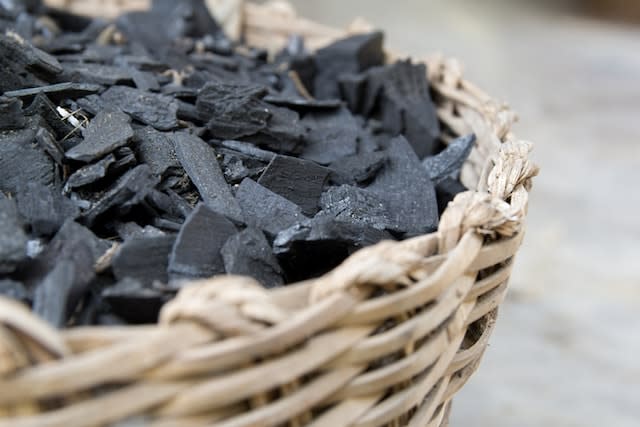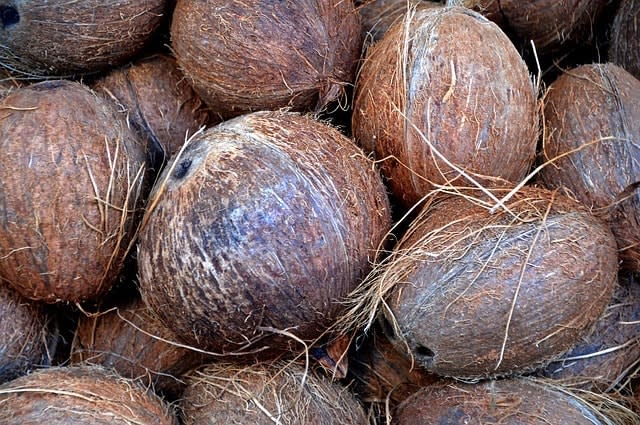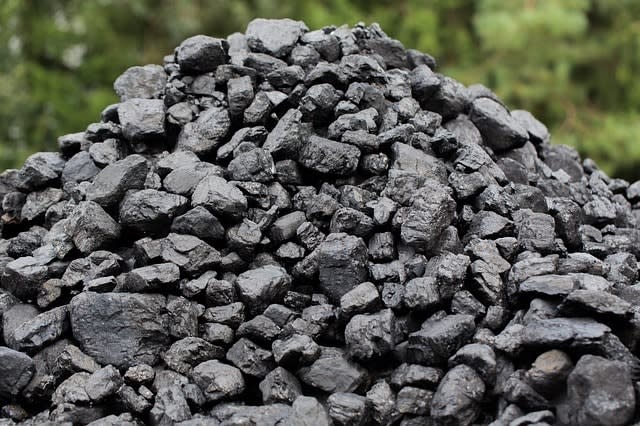Complete Guide to Activated Carbon

Activated carbon is a common product used to filter and purify numerous substances. Although few people realize it, activated carbon touches everyone’s lives. If you drink municipal water, use soap, brush with toothpaste, or drink decaffeinated coffee, your life involves activated carbon.
Air purification is an important use for activated carbon as well. The material is highly effective at removing toxins and odors, creating clean, healthy air for homes and offices.
Because many of the air purifiers from Oransi use activated carbon filters, we’d like to help you understand this material, including its history, how it’s made and why it is so effective in the purification process.
Activated carbon is highly effective because it is able to trap particles of the smallest sizes. Many other filters will not trap extremely small particles – think gases, chemicals and VOC’s. Due to the nature of activated charcoal, this product is able to trap tiny particles that might otherwise fall between the cracks. (Literally!)
Whether you are looking to remove harmful chemicals or orders, air purifiers with activated carbon can be highly effective. But first, you need to understand how they are made and how they work.
What is Activated Carbon?

Activated carbon, often referred to as “activated charcoal” is an extremely porous form of carbon that is used in the purification of water and air. The material has been specifically processed to give it a porous quality, increasing the surface area of the product.
Activated carbon is often suited for many uses, including air purification, water treatment, sewage treatment, and smoke removal. It is commonly used to treat municipal drinking water, but it also has a body-cleansing quality that has been linked to life-saving practices. Because it can be used to cleanse bodies, it’s a common product in emergency kits and hospitals.
Activated carbon can purify a wide range of physical substances. So, it is often used to deodorize air and water. Some people have found it useful for removing odors from refrigerators or removing a strong smell from the air, making it a popular material in A/C filters.
How is Activated Carbon Made?

Activated carbon is made from many different raw materials. The most common are wood, nutshells, coconut shells, coal, and peat. Almost any carbon-heavy material will do for the creation of activated carbon, although some materials are either easier to obtain or result in a superior final product.
Essentially, the raw carbon material is full of other substances, such as organic matter, that fill microscopic holes, or pores, in the carbon. The process starts by removing these substances and leaving behind pure (or nearly pure) carbon. The microscopic pore sizes that were filled with other substances are now empty, drastically increasing the surface space of the carbon. The measure of the void in the material is known as porosity.
But the process is not complete. Now the carbon needs to be “activated” through oxidation. Once the material goes through the activation process, it will be ready to grab and hold toxins and molecules.
There are two commonly-used processes for activating the carbon (or charcoal) material. The first is called steam activation, also known as physical activation. During this process, the raw material is converted using hot gases, followed by air which burns out the gasses. Physical activation uses either carbonization or activation/oxidization and can require temperatures over 600 degrees Celsius.
The other process used for activating carbon is chemical activation. During this process, the raw material is impregnated with a chemical, usually an acid, base, or a type of salt. The material is then processed at a lower temperature, usually around 450 to 900 degrees Celsius. Because of the lower required temperatures, chemical activation is often the more efficient and effective method for activating carbon.
Steam-Activated vs Chemical-Activated Carbon: Is there a Difference?
After the processes of activation are completed, is there a difference between the two products?Does the process result in activated carbon that behaves, filters, and performs in different ways?
In general, the two different processes result in extremely similar products, but there can be slight variations that make large differences in filtration performance. For example, steam-activated carbon goes through an acid wash, which purifies the carbon. Chemical activation, however, does not require an acid wash.
Steam activation usually produces activated carbon that is about 1 to 3 millimeters in thickness. These pieces are then crushed and screened to remove dust and other impurities and to meet certain specifications.
Chemical activation, on the other hand, produces powdered carbon that usually does not need further crushing. It may, in fact, need to be made larger to meet certain needs. Small pieces, if required, can be impregnated with an activating agent that results in larger grains. Also, chemically-activated carbon can be given a second round of steam activation, which will give it additional properties.
So, the bottom line is this: yes, steam and chemical activation produce different products, but they can often be modified through further processing to create similar results.
Making Activated Carbon at Home: Is it Possible?
Home-made activated carbon is a real thing. But is it, in reality, practical?Making activated carbon at home for personal use is a common practice among survivalists and do-it-yourselfers, but it can be a lengthy, prolonged process. It involves cooking charcoal at extremely high heats, powdering the charcoal in whatever way possible, and mixing the powder with a calcium-chloride solution.
Essentially, it can be a long process that is often not worth the trouble unless you simply enjoy the process of making your own materials and products.
There is also the financial factor. Activated charcoal is made at industrial scale, which means the process has been streamlined and made more affordable. Purchasing industrial-made charcoal, therefore, is cheaper than buying all the materials and tools you’ll need to make it at home. And it’s also much quicker!
So, while you can make activated carbon at home if you want, it’s really not practical for the average person. If you’re a DIYer, then go for it, but don’t expect a great return for your efforts outside of personal satisfaction.
The Surface Area: Why it Matters

At its most fundamental level, the surface area in activated charcoal is what matters the most. Activated carbon is extremely porous, filled with microscopic and submicroscopic pores that create a dense network of holes in the material. With these millions of pores in a small amount of activated carbon, there is a massive surface space for water or air to pass through. This massive surface space grabs onto toxins and holds them in place, giving activated carbon its fantastic purifying ability.
When the activation process is complete, 50 grams of activated charcoal has the physical surface space of roughly 10 football fields. That’s right, thanks to all those microscopic pores, a small amount of activated carbon has a stunning, nearly unbelievable, surface space!
Activated carbon can be so effective that many people claim it not only filters air and water, but can be used to whiten teeth, alleviate bloating, and treat alcohol poisoning, among other health benefits and uses. (To be fair, some of these claims require further research before being accepted by the scientific community.)
Activated Carbon: What do the Health Studies Say?
Whenever we discuss filtration technology and its impact on health, we always want to support our information with independent research and scientific studies. With that in mind, let’s look at a three important studies and reports that have examined the effectiveness of activated carbon.A study by the U.S. Department of Energy found that HVAC filters using activated carbon removed 60 to 70% of ozone from air that passed through it, while filters without activated carbon had almost no effect on the amount of ozone.
Another study, also commissioned by the U.S. Department of Energy, found that activated carbon filters were capable of removing up to 80% of volatile organic compounds and up to 30% of formaldehyde, a common air pollutant.
The Centers for Disease Control, which provides information on a wide range of health issues, releases a report in 2003 that stated that activated carbon is “excellent for most organic chemicals.”
Adsorption vs Absorption
While the basic result is similar, absorption and adsorption are two very different processes. Understanding how the process of adsorption and absorption work will help you understand the effectiveness of activated charcoal.
Absorption
The process, or at least the term, you are probably more familiar with is absorption. During absorption, one substance enters the bulk of another substance. It involved molecules literally entering the volume of a material. During this process, the two materials come together and essentially form a new material.
Adsorption
Adsorption is slightly different. During this process, a substance basically attaches itself to another material, but doesn’t enter the material. Adsorption happens on the surface level and does not create a new substance, but rather to substances hanging on to each other.
Handy analogy: Think of absorption like people riding in a boat, while adsorption is like skiers attached to the boat; the skiers are along for the ride, but they’re not inside.
Absorption
The process, or at least the term, you are probably more familiar with is absorption. During absorption, one substance enters the bulk of another substance. It involved molecules literally entering the volume of a material. During this process, the two materials come together and essentially form a new material.
Adsorption
Adsorption is slightly different. During this process, a substance basically attaches itself to another material, but doesn’t enter the material. Adsorption happens on the surface level and does not create a new substance, but rather to substances hanging on to each other.
Handy analogy: Think of absorption like people riding in a boat, while adsorption is like skiers attached to the boat; the skiers are along for the ride, but they’re not inside.
Understanding “GAC”

One of the terms you will come across when researching activated carbon for air and water purification is “GAC.” This acronym stands for Granular Activated Carbon, and it’s one of the two basic forms that you will find for the material. The other basic form is a solid substance that comes in a single piece of carbon.
GAC is ground, or “granulated,” carbon that can be so fine it resembles a loose powder. The product is made by taking solid pieces of carbon and pulverizing it into much smaller grains. The pulverized carbon is then sifted through sieves to separate it into uniform sizes. This allows manufacturers to separate GAC into large, small, and even dust-like activated carbon.

Coconut Shell Activated Carbon
Coconut shells are one of the most commonly-used raw materials for creating activated carbon. Activated carbon made from coconut shells are high in micro pores. In fact, roughly 85 to 90% of the surface area is micro pores.
Why does this matter? Because smaller pores often match the size of contaminant molecules in air and drinking water, and therefore make coconut shell activated carbon highly effective at trapping them.
There are numerous benefits to using coconut shell activated carbon as opposed to other materials, and the advantages go beyond the product’s effectiveness. The raw material, coconuts, is a renewable source of carbon that grows throughout the year and can be harvested up to four times annually. There is no mining required, and unlike wood activated carbon, you don’t need the entire tree, only the coconuts.
Why does this matter? Because smaller pores often match the size of contaminant molecules in air and drinking water, and therefore make coconut shell activated carbon highly effective at trapping them.
There are numerous benefits to using coconut shell activated carbon as opposed to other materials, and the advantages go beyond the product’s effectiveness. The raw material, coconuts, is a renewable source of carbon that grows throughout the year and can be harvested up to four times annually. There is no mining required, and unlike wood activated carbon, you don’t need the entire tree, only the coconuts.
A History of Activated Carbon

While few people are aware of the impact activated carbon has had on mankind’s history, it’s arguably one of the most important innovations we have ever discovered. It’s believed that the use of carbon as a cleaning and purifying agent has been known for millennia. Some even believe humans were using charcoal for cleaning for over 3,500 years.
Throughout history, carbon was used to reduce odors in the air and to purify water. It was used in hospitals to reduce smells, and ancient sailors learned to use activated charcoal on the inside of their water barrels to keep drinking water safe for a longer period.
During America’s westward expansion, charcoal was added to water during long treks, turning undrinkable swamp water into a resource that could be consumed by humans.
While regular carbon was used for centuries, activated carbon has only been around for less than 200 years.
There is a story of a French professor who was so confident in activated carbon’s purifying capabilities that he drank a vial of poison along with a dose of powdered activated carbon. As the legend holds, the professor walked away to the astonishment of his peers. Activated charcoal is now a common cure for stomach disorders and can even be used as an antidote for poison.
Activated carbon saw significant industrial production starting in the early 20th century. Around 1910, plants began mass producing activated carbon for the decolorization and purification of foods, including sugar.
In World War I, activated carbon was used extensively in gas masks, saving countless lives from gas poisoning. Activated carbon is now found in nearly every hospital and clinic, it’s used in food refinement, dry cleaning, pharmaceuticals, and more.
Important Properties of Activated Carbon
There are many different properties and characteristics of activated carbon, and understanding these factors will help you understand how the material is measured and analyzed.
Iodine Number
Iodine adsorption is used to measure the effectiveness of activated carbon. During this test, activated carbon is added to a liquid holding a specific amount of iodine. The carbon is mixed thoroughly until it has dissolved into the solution. After a few minutes, the solution is filtered into another container, removing the charcoal particles and allowing the liquid to pass through. The iodine number is a gauge of the amount of iodine removed from the liquid. Essentially, the higher the number, the more iodine was removed.
Pore Diameter
The diameter of the pores on and inside activated carbon will make a significant difference in how the materials performs. Pore diameter can determine the specific use of a carbon, as activated carbon with more micropores (smaller pores) can be effective for removing low concentrations of organic matter found in water. Activated carbon with both small and large pores are very versatile and can be used to remove both chlorine and a wide variety of organic matter at the same time.
Surface Area
The surface area is another important property that is often cited on activated carbon. Depending on the raw material, the activation process, and other factors, the surface area will vary, giving the charcoal more or less adsorption potential. Surface area for activated carbon is often measured using a BET nitrogen adsorption test.
Density
Density will affect the volume activity. Generally, a higher density will indicate a higher-quality activated carbon. There are numerous ways to define density, including real density, which is the density excluding the voids of the material, as well as particle density, which is the measured density of the carbon particles alone. There is also wetted density, apparent density, bed or bulk density, and tamped density. All of these density measurements provide specific data on activated carbon performance.
Ash Content
Ash content is an important measurement for activated carbon and can drastically change the effectiveness and specific use for the product. Ash in the activated carbon reduces the speed and reliability of reactivation and metal oxides can be released from charcoal with high ash content, resulting in discoloration when used to purify water. Carbon with high ash content is not good for fish tanks, as they can lead to heavy metal poisoning in the aquatic life, including fish and coral species. The type of ash can vary as well. For example, activated carbon made from coconut shells often has a higher concentration of alkali earth metals, while carbon made from coal is often loaded with heavy metals.
Mesh
The size of granular activated carbon (activated carbon that is in the form or a powder or fine grains) is measured using a Mesh system. It is measured by shaking a sample of the granulated carbon through a series of fine sieves. Imagine sieves like a window screen only much finer, with far smaller holes between the wires. Using a system that measures how much of the carbon passes through the screens, the activated carbon can be measured for general size.
Molasses Number
The molasses number for activated carbon is a measurement of the charcoal’s effectiveness for removing large molecules. This is done by allowing the activated carbon to adsorb a molasses solution. The higher the molasses number, the better the activated charcoal is at removing these large molecules.
So, while UV light kills living cells, activated carbon can trap particles, living or inanimate. This makes activated carbon and UV light an effective combination for air cleaning and purification; the carbon traps particles of most types, while the UV light can kill potentially harmful mold, bacteria, and viruses.
Activated carbon, therefore, is preferred for home use. If you are looking to improve the quality of your indoor air, you should seriously consider using air purifiers with activated carbon filters. Fortunately, Oransi has a full selection of options for you to choose from...
Iodine Number
Iodine adsorption is used to measure the effectiveness of activated carbon. During this test, activated carbon is added to a liquid holding a specific amount of iodine. The carbon is mixed thoroughly until it has dissolved into the solution. After a few minutes, the solution is filtered into another container, removing the charcoal particles and allowing the liquid to pass through. The iodine number is a gauge of the amount of iodine removed from the liquid. Essentially, the higher the number, the more iodine was removed.
Pore Diameter
The diameter of the pores on and inside activated carbon will make a significant difference in how the materials performs. Pore diameter can determine the specific use of a carbon, as activated carbon with more micropores (smaller pores) can be effective for removing low concentrations of organic matter found in water. Activated carbon with both small and large pores are very versatile and can be used to remove both chlorine and a wide variety of organic matter at the same time.
Surface Area
The surface area is another important property that is often cited on activated carbon. Depending on the raw material, the activation process, and other factors, the surface area will vary, giving the charcoal more or less adsorption potential. Surface area for activated carbon is often measured using a BET nitrogen adsorption test.
Density
Density will affect the volume activity. Generally, a higher density will indicate a higher-quality activated carbon. There are numerous ways to define density, including real density, which is the density excluding the voids of the material, as well as particle density, which is the measured density of the carbon particles alone. There is also wetted density, apparent density, bed or bulk density, and tamped density. All of these density measurements provide specific data on activated carbon performance.
Ash Content
Ash content is an important measurement for activated carbon and can drastically change the effectiveness and specific use for the product. Ash in the activated carbon reduces the speed and reliability of reactivation and metal oxides can be released from charcoal with high ash content, resulting in discoloration when used to purify water. Carbon with high ash content is not good for fish tanks, as they can lead to heavy metal poisoning in the aquatic life, including fish and coral species. The type of ash can vary as well. For example, activated carbon made from coconut shells often has a higher concentration of alkali earth metals, while carbon made from coal is often loaded with heavy metals.
Mesh
The size of granular activated carbon (activated carbon that is in the form or a powder or fine grains) is measured using a Mesh system. It is measured by shaking a sample of the granulated carbon through a series of fine sieves. Imagine sieves like a window screen only much finer, with far smaller holes between the wires. Using a system that measures how much of the carbon passes through the screens, the activated carbon can be measured for general size.
Molasses Number
The molasses number for activated carbon is a measurement of the charcoal’s effectiveness for removing large molecules. This is done by allowing the activated carbon to adsorb a molasses solution. The higher the molasses number, the better the activated charcoal is at removing these large molecules.
Activated Carbon Compared to Other Air Purification Options
Activated Carbon vs HEPA Filters
There are big differences between activated carbon filters and HEPA filters. This is because some HEPA filters are meant to remove airborne particulates (dust, mold spores, pet dander, pollen, etc) whereas carbon is used to remove gases, chemicals and VOC's. The main component of a HEPA filter is a thin fiberglass or polypropylene material, that is effective for trapping minute particles. Essentially, “HEPA” refers to a high-efficiency particulate air filter that removes at least 99.97% of air particles at 0.3 microns. Activated carbon in contrast is often made from coal, charcoal, or coconut shell and is designed to act as an adsorbent to remove smaller range of particle sizes for items like gases, chemicals and VOC’s. Gases are so small they will simply pass through the fibers in a HEPA filter.Activated Carbon vs UV Light
UV light is another technology that is used to filter contaminants from the air. However, UV light is only effective on organic and living matter, especially mold and mildew. UV light attacks a cell’s DNA, disrupting or outright killing the cells. Any mold or mildew spores that pass through a UV-light purifier will be destroyed. The technology may also be used to kill viruses and bacteria, but more research is required in this regard.So, while UV light kills living cells, activated carbon can trap particles, living or inanimate. This makes activated carbon and UV light an effective combination for air cleaning and purification; the carbon traps particles of most types, while the UV light can kill potentially harmful mold, bacteria, and viruses.
Activated Carbon vs Ionizers
Ionizers are a controversial, albeit effective, way to destroy mold, remove odors, and “purify” the air in a home. Ionizers and ozone generators, a similar product, release ozone into the air, which then attacks cells and destroys them at the molecular level. This sounds great, but it doesn’t just attack mold, it can also attack skin cells, lung cells, and any other cells it comes into contact with. Therefore, activated carbon, which traps particles and does not harm our cells and is a far more preferable treatment.Activated Carbon vs. Electrostatic Precipitators
Electrostatic precipitators essentially use static cling to grab airborne particles and trap them in place. They can be effective for removal of harmful particles and allergens, but they have one specific problem: they release ozone as a byproduct. For this reason, electrostatic precipitators are, in most cases, only used for industrial purposes, like cleaning steam and smoke before it is released into the atmosphere.Activated carbon, therefore, is preferred for home use. If you are looking to improve the quality of your indoor air, you should seriously consider using air purifiers with activated carbon filters. Fortunately, Oransi has a full selection of options for you to choose from...
Oransi Air Filters with Activated Carbon Filters
While many of our purifiers use activated carbon to clean the air, these are a few examples of the quality Oransi products that use this incredibly effective material.
EJ Air Purifier
Useful for both small and large rooms, the EJ Air Purifier removes allergens, dust, bacteria, mold spores, and pet dander. This room air purifier uses our proprietary coconut shell carbon system as a pre-filter, providing superior odor removal while eliminating many other toxins from the air.
ERIK 650A Air Purifier
Your home can have the same air-purifying technology that is used in hospitals with the Erik 650A Air Purifier. Our proprietary granular activated carbon (coconut shell based) and potassium permanganate provides world-class air cleaning and can be used to remove odors or clear a room of mold spores.
Max HEPA Air Purifier
This is a powerful air filter that is useful for bedrooms, offices, living rooms, and basements. With activated carbon technology, this purifier easily removes light odors and gases, all while removing 99% of airborne particles. For the removal of home contaminants, such as dust and pet dander, few purifiers can compete with the Max HEPA Room Air Purifier.
ERIK Multi-Carbon Air Purifier
The main filter in this highly-effective air purifier consists of eight one-inch honeycombed grids filled with granular carbon, all contained by a fine mesh nylon screen. The main filter is made from coconut shell-based carbon that gives the purifier superior performance in the removal of toxins from the air.
If you are looking for an extremely reliable air purifier for your home or office, Oransi is here to help. We are a global leader in air purification, so browse our full selection of air purifiers and place your order today!
EJ Air Purifier
Useful for both small and large rooms, the EJ Air Purifier removes allergens, dust, bacteria, mold spores, and pet dander. This room air purifier uses our proprietary coconut shell carbon system as a pre-filter, providing superior odor removal while eliminating many other toxins from the air.
ERIK 650A Air Purifier
Your home can have the same air-purifying technology that is used in hospitals with the Erik 650A Air Purifier. Our proprietary granular activated carbon (coconut shell based) and potassium permanganate provides world-class air cleaning and can be used to remove odors or clear a room of mold spores.
Max HEPA Air Purifier
This is a powerful air filter that is useful for bedrooms, offices, living rooms, and basements. With activated carbon technology, this purifier easily removes light odors and gases, all while removing 99% of airborne particles. For the removal of home contaminants, such as dust and pet dander, few purifiers can compete with the Max HEPA Room Air Purifier.
ERIK Multi-Carbon Air Purifier
The main filter in this highly-effective air purifier consists of eight one-inch honeycombed grids filled with granular carbon, all contained by a fine mesh nylon screen. The main filter is made from coconut shell-based carbon that gives the purifier superior performance in the removal of toxins from the air.
If you are looking for an extremely reliable air purifier for your home or office, Oransi is here to help. We are a global leader in air purification, so browse our full selection of air purifiers and place your order today!
Want to learn more about cleaning your air? Check out the
Beginners Guide to an Air Purifier. We also recently wrote this guide on how to choose an air purifier.
